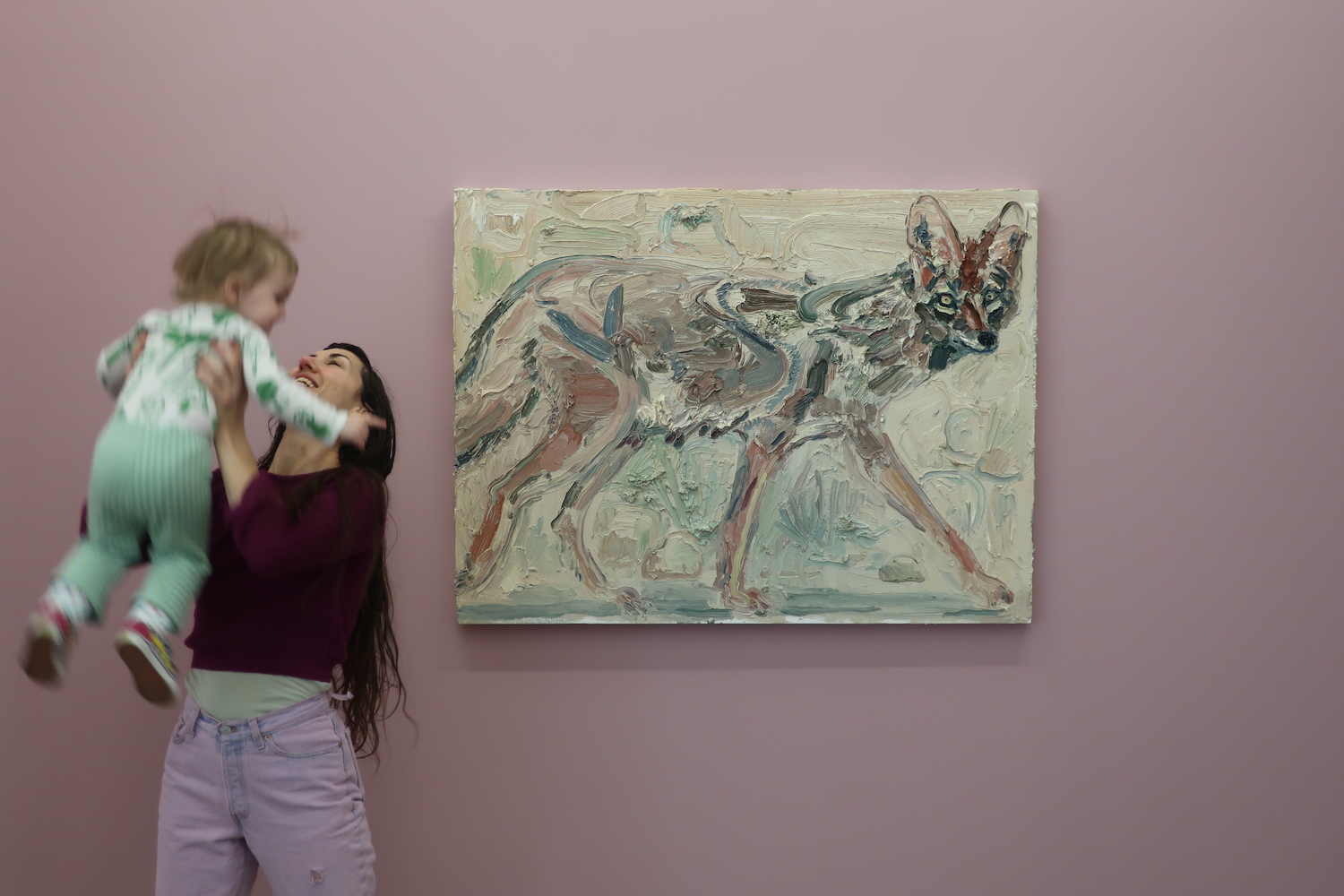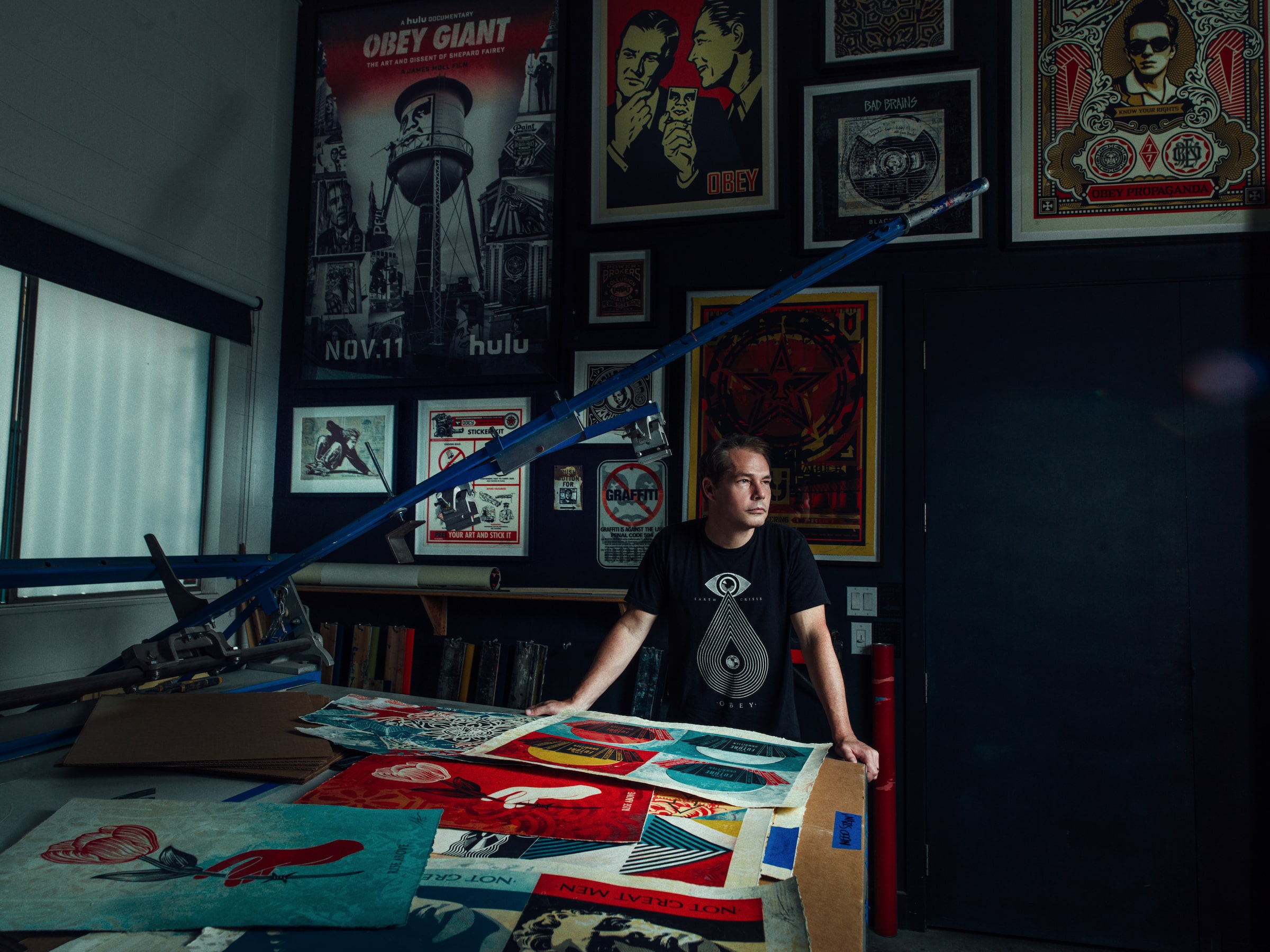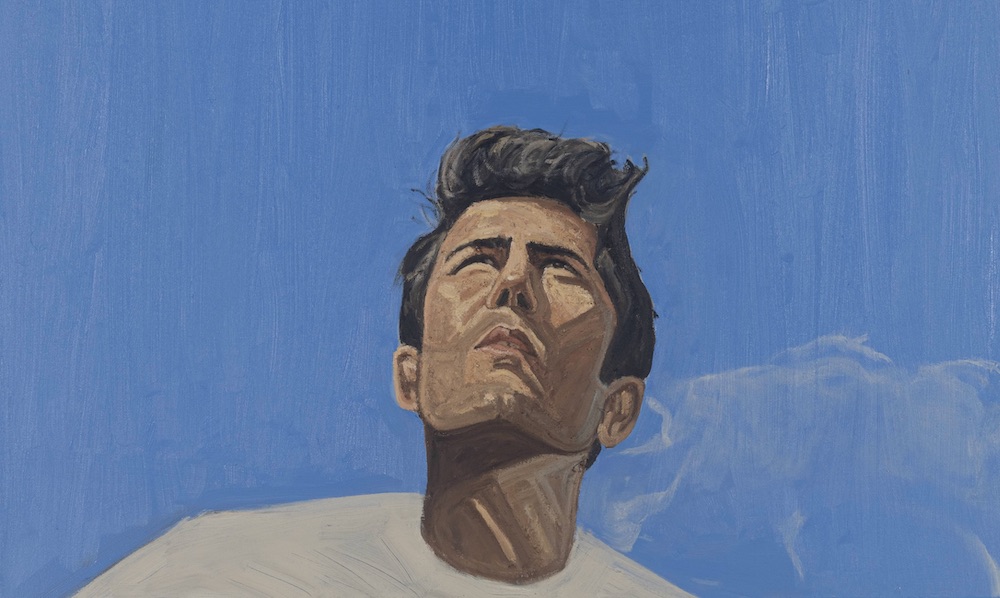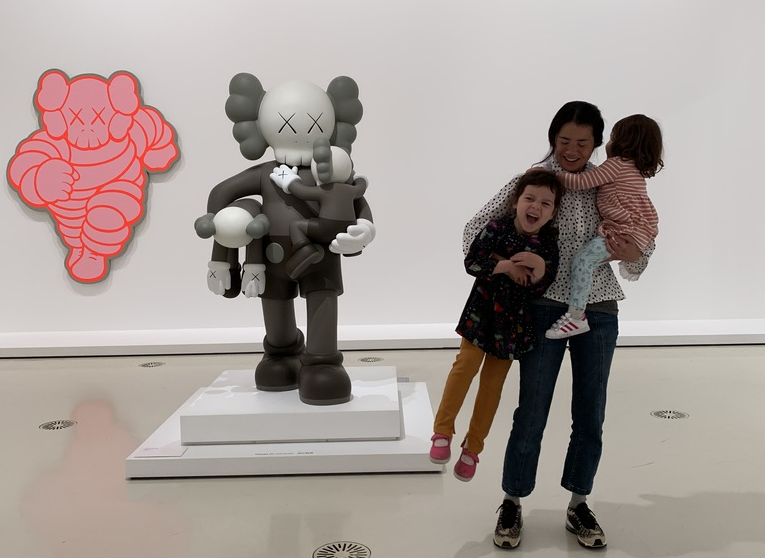Allison Schulnik’s recent show at P·P·O·W in New York, “Hatch,” was an intimate, magical investigation of early motherhood. It was the artist’s first presentation since giving birth to her daughter and moving out to the desert of Sky Valley, CA.
Works thick with oil paint showed the texture of a spiky succulent, the delicious folds and rolls of a newborn, the icy blue eyes of her daughter lying on a woven rug, or a far-off mountain vista at dusk or dawn. Some paintings were hung salon-style, others against a forest green or dusty purple wall. A gouache-on-paper animated film (which we discovered she made while recovering from a C-section!) captured the spiritual journey and fantastic transformation of becoming a mother.
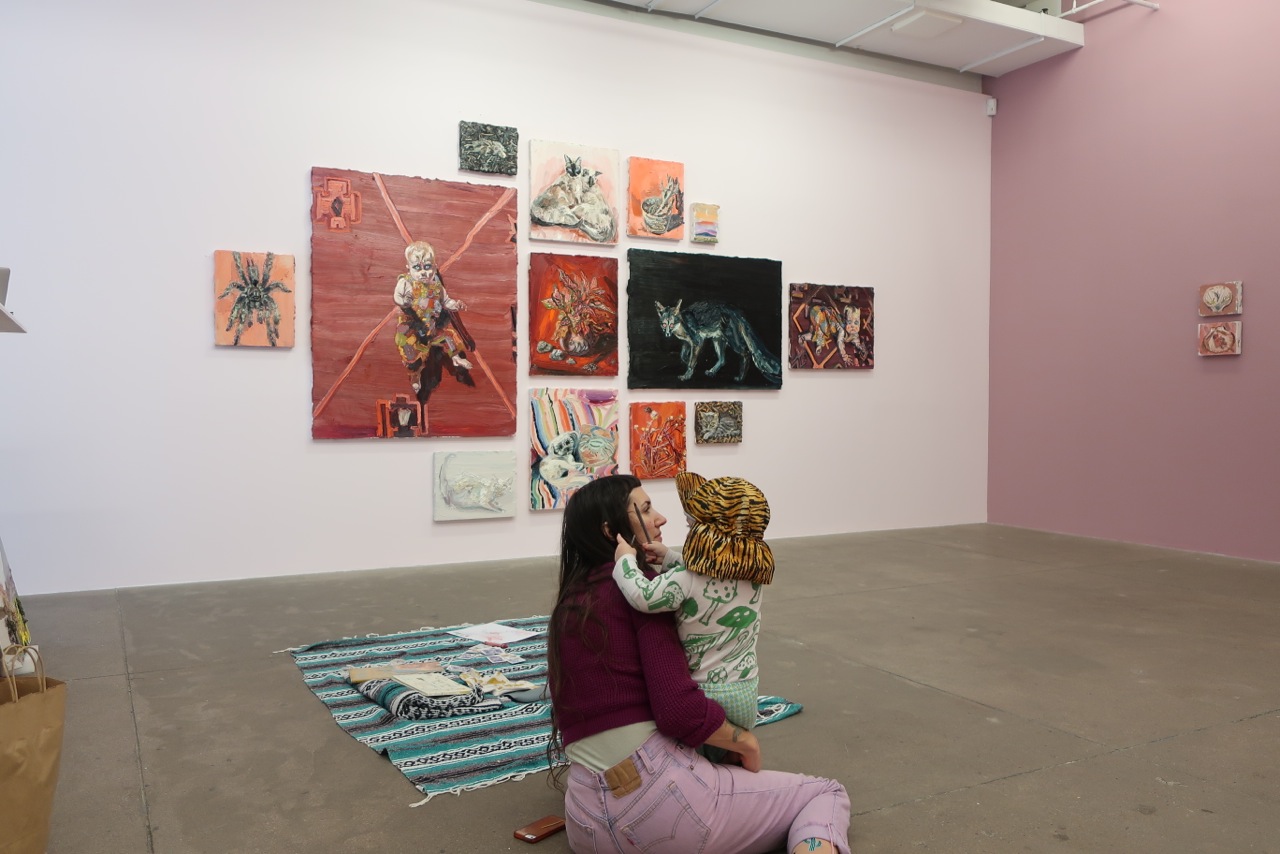
Courtesy of Allison Schulnik.
For the latest in our Art Mamas series, we reached out to Schulnik to learn how her practice has evolved since having her daughter, and why she can now better focus on making work of quality and integrity.
“Hatch” closed to the public early, due to the ongoing COVID-19 pandemic. We checked in with Schulnik to see how she was doing, and she told us, “I hope everyone is staying home, keeping healthy and thinking about those who have weakened immune systems, and the heroes putting their lives on the line daily. We won’t get to feel hugs from people outside our own household for who knows how long. We’ll stay home, help people who need help, make stuff, create things, if we are lucky enough to have the time to do that, while homeschooling and caring for elders, etc., with no leader… and we will make it through to the other side of this.”

Courtesy of Allison Schulnik.
WHITEWALL: When did you become a mom?
ALLISON SCHULNIK: July 2018.
WW: Were you able to take any leave?
AS: Yes. My husband and I moved out to the desert to ease the financial grip the city can have on an artist. I feel like when I was younger, I put way too many shitty paintings into the world. I really wanted to work at a slower pace, where I could really focus on quality and integrity in my work over quantity; and where we were lucky enough to be able to build ourselves studios in our backyard, make our own hours, and mainly so we could be home with a baby if we were lucky enough to have one.
I wanted to not be using toxic materials, a lot of which I use in my painting and film work, for as long as possible. So, I stopped oil painting a few months before I was lucky enough to get pregnant, and kept off the oils for just over 1.5 years.
That said, I got back to work pretty quickly by choice, within a few weeks of her birth—very slowly and a minimal amount of work for a while. However, it was not painting with oils. Instead, I made a gouache-on-paper animated film that I could do sitting down while recovering from C-section and continuously breastfeeding. It was a way of working that would allow me to have the baby in a crib next to my desk. I could paint with her in a sling on my chest, as well.
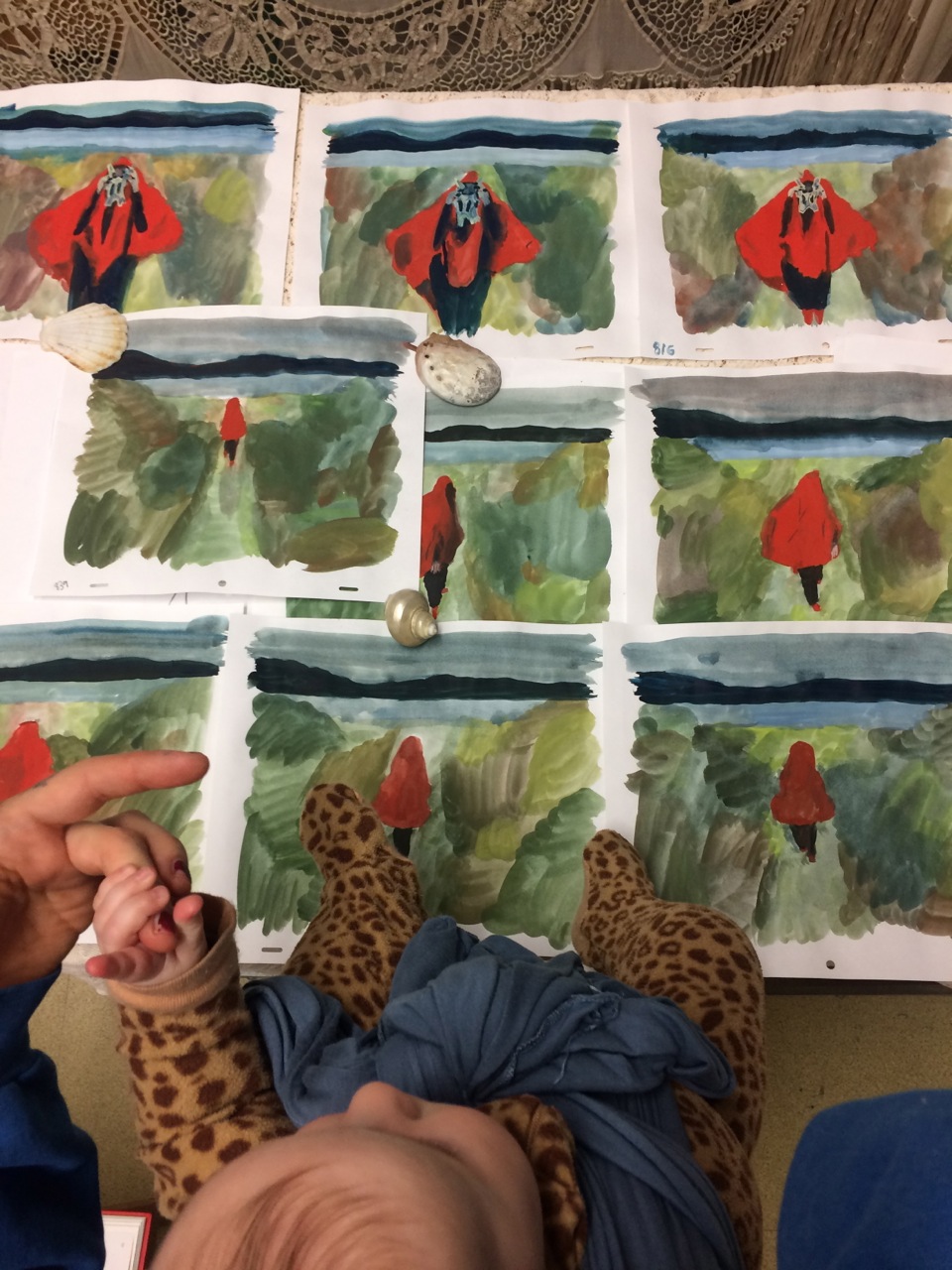
Courtesy of Allison Schulnik.
I would’ve been bored just healing up on the couch for more than two weeks or so. I’d been wanting to work on a hand-painted, traditional animation-on-paper project for decades, so I finally got to do that. I just did it really slowly. My baby chose my hours in the beginning. We both work from home, so it makes everything easier. When they nap or sleep, you can work. My husband is a dream partner and father and we split the responsibilities of the baby/house, so we are both able to make the work we love and need to make.
WW: How interesting that in your recovery after having your baby, you were able to actually focus on a project you’d been wanting to do for so long. What was that transition back to working like?
AS: I would say the transition started long before I was pregnant and is still happening. It’s both blissfully easy and tremendously hard at the same time.
WW: What has surprised you so far about motherhood?
AS: It’s insane how much love a person can feel, and how someone who never thought she wanted babies can love having babies so much.
WW: It’s wild! Did you find yourself connecting with people in a new way?
AS: I think I connected a lot more with my mother and other mothers more than I had in the past.
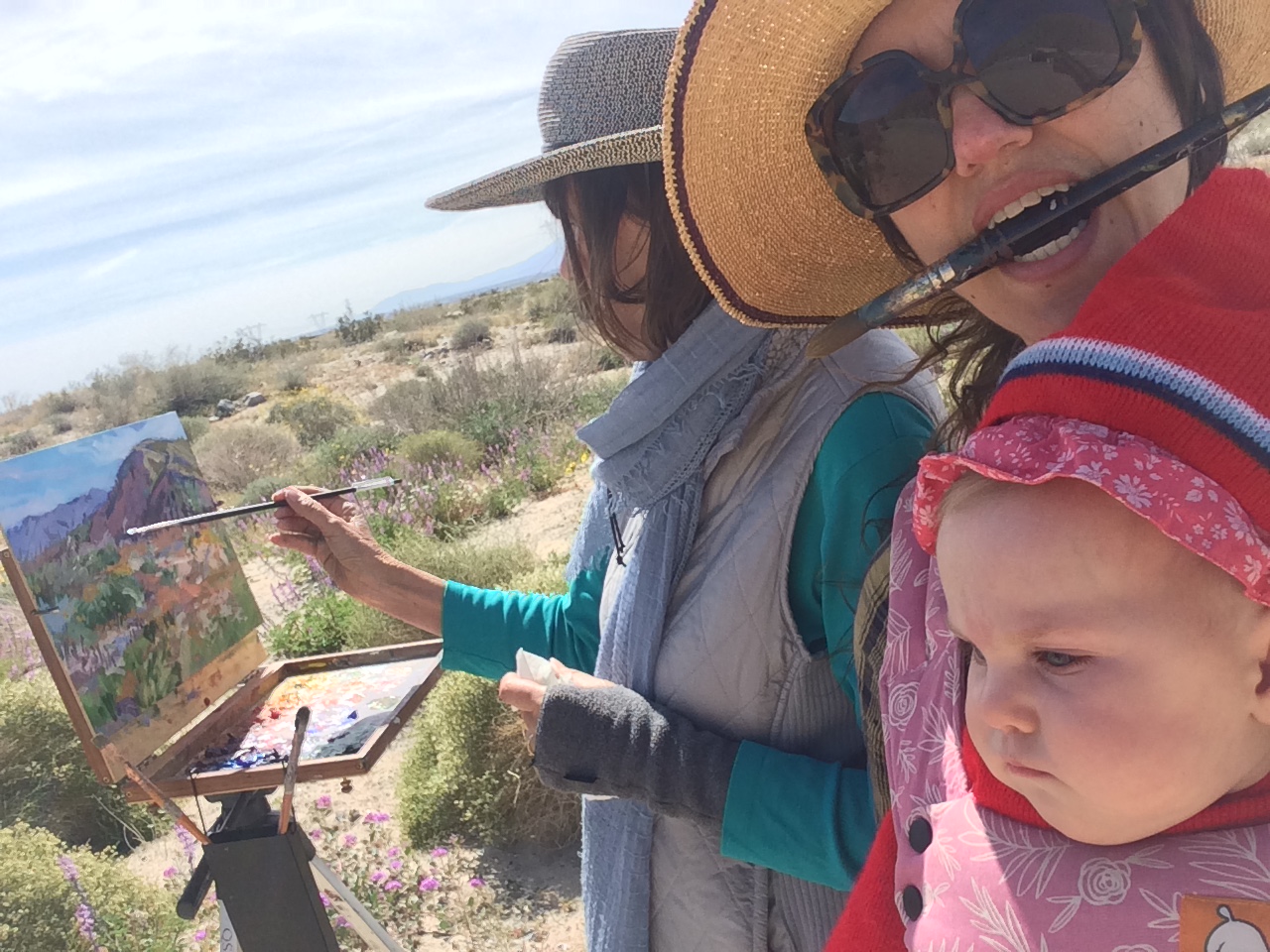
Courtesy of Allison Schulnik.
WW: Yes! I find myself calling and appreciating my mother so much more now, too. How do you interact with your community of mothers?
AS: Well, we are slightly secluded out here, but we try to make good efforts to travel a lot and see people, other mothers and families. I take some classes with her in town and we have desert rat playdates.
WW: Did becoming a mother, change how you viewed your role as an artist?
AS: I don’t think so. I think I just appreciate women a whole lot more.
WW: Has motherhood changed your creative interests?
AS: Probably not.
WW: Was it natural for you to address motherhood in your work in the show “Hatch,” recently on view at P·P·O·W in New York?
AS: I could not have ever done anything differently. I can only work honestly, and if my baby is what I am thinking about, that’s what I’m painting.
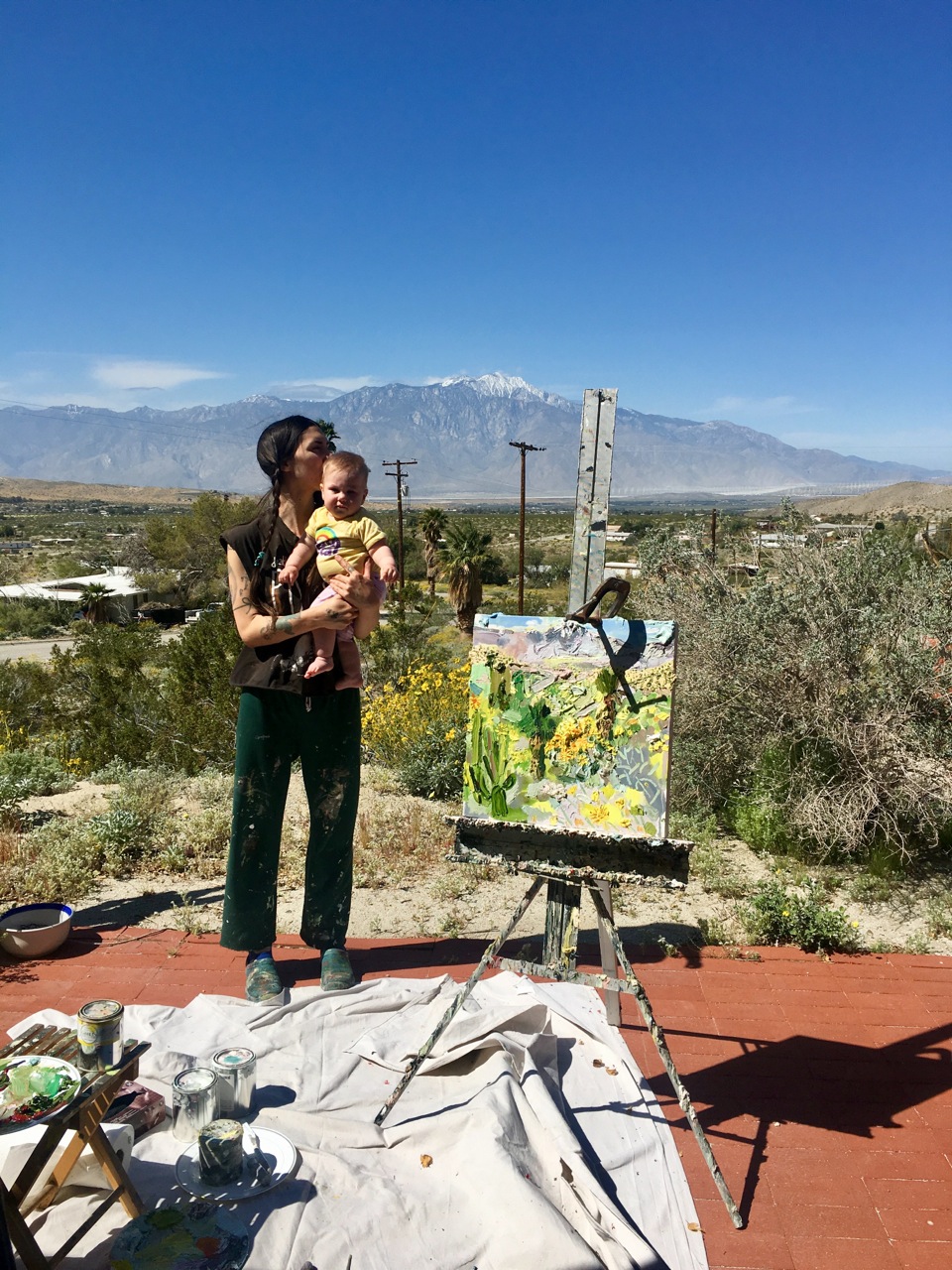
Courtesy of Allison Schulnik.
WW: How do you experience art with your daughter?
AS: Freedom is really what we focus on. She makes her own choices pretty much, and she will build her own dreams and ideas on art and what it is to her. I follow her lead. She sees art in spiders and the moon.
WW: What is something a mother has shared with you that’s really resonated?
AS: Air dry.
WW: Ha! I can second that! What is the biggest misconception about motherhood?
AS: That it stops you from making good work. It does take your time away from things you had time for in your pre-baby life, but you choose what those things are. You make time for what you need.



